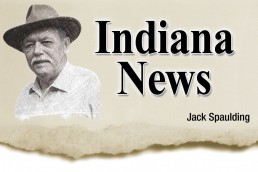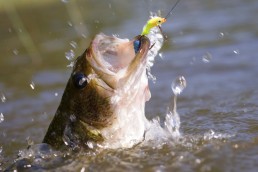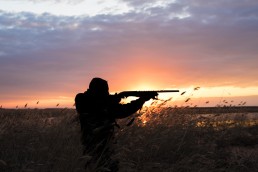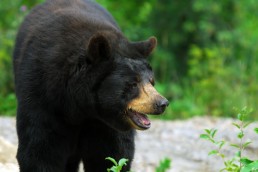Indiana News
SHARE THIS POST
Multi-state investigation brings $85,000 in fines, restitution
Indiana Conservation Officers and Illinois Conservation Police investigated cases of hunting license/permit fraud beginning in early 2015 and extended through 2016, which has resulted in over $85,000 in fines and restitution.
“Operation Double Dip was started to investigate individuals claiming residency in Illinois and Indiana in order to purchase hunting licenses/deer permits at the cheaper resident rate,” said Sgt. David Hyatt, Illinois Conservation Police. “This is a case that protects the privileges of our legitimate resident hunters and ensures that each state receives the funding needed for Fish and Wildlife projects.”
Both Indiana and Illinois law states, “No person may claim residency in more than one state at the same time for the purpose of purchasing resident hunting or fishing licenses.” The investigation revealed many of the defendants had defrauded the state for several years.
There were 211 counts of falsification filed in the State of Illinois. A 100 percent conviction rate was recorded against all Illinois defendants who have been ordered to pay over $65,000 in restitution and fines. Prosecution was handled by the Illinois attorney general’s office and the Sangamon County states attorney’s office.
“Conservation Law Enforcement is an important component in the protection and continual improvement of our state’s natural resources,” said Col. Danny L. East, Indiana DNR Law Enforcement division director. “The cooperative efforts of both Indiana and Illinois law enforcement divisions were vital to the success of this case.”
A total of 21 years of hunting privilege revocations were ordered against Illinois defendants. Indiana has recorded an estimated 57 defendants because of the investigation. The majority of Indiana cases are still pending and the final amount of charges has not yet been determined. The $20,581.50 in restitution has been ordered, and 12 years of hunting privileges have been revoked against Indiana defendants so far in the case.
Participants needed for Community Hunting Access Program
The DNR Division of Fish & Wildlife is launching Community Hunting Access Program (CHAP), a new program designed to increase hunting access and reduce conflicts with white-tailed deer in urban and municipal environments.
In the past, the program was under the title Urban Deer HuntIN, but has since been renamed due to other programs with similar names. The Community Hunting Access Program will provide community partners financial and technical assistance to administer hunting programs in their communities. Each community partner will determine where and when managed hunts occur and what hunters are able to participate.
A CHAP coordinator will administer each managed hunt, and these persons will be contractors of DNR Fish & Wildlife and be trained in hunting safety, deer biology and public relations.
DNR Fish & Wildlife is seeking feedback from both interested community partners experiencing deer conflicts and individuals who may want to become a CHAP coordinator.
Individuals must meet certain criteria to be considered. Qualifications include any state-sponsored Hunter Education certification one of the following: National Rifle Association (NRA) Hunter Instructors Clinic Program Certification, 4-H Shooting Sports Instructor Certification or any state-sponsored Hunter Education Instructor Program Certification.
Communities already participating in urban deer management strategies are encouraged to send an attendee to CHAP Coordinator training for certification. For communities considering deer management options, the Urban Deer Technical Guide is online at wildlife.IN.gov/files/fw-UrbanDeerTechnicalGuide.pdf.
For more information on the program contact your area wildlife biologist. A map with contact information is available at wildlife.IN.gov/2716.htm.
State Parks looking for volunteers
From maintaining trails to entering computer data to helping in the nature centers, Hoosiers are needed to help state park properties by donating their time and talent.
“Volunteering gives you a great sense of accomplishment,” said Jody Heaston, volunteer coordinator for Indiana State Parks. “You know you are helping manage and conserve our natural and cultural resources for future generations to enjoy.”
For more information, visit stateparks.IN.gov/2443.htm. You can download an application and return it to the state park or lake where you want to volunteer. You may also send the application to jheaston@dnr.IN.gov if you don’t have a particular park in mind.
Reward for info on whooping crane shot in Greene County
Indiana Conservation Officers have partnered with Indiana Turn in a Poacher (T.I.P.), Friends of Goose Pond and International Crane Foundation to offer a reward of $6,500 for information leading to the arrest and conviction of the person(s) responsible for killing a whooping crane in Greene County.
On January 3, an International Crane Foundation volunteer found the bird near Goose Pond Fish and Wildlife Area. The carcass has been sent to the National Fish and Wildlife Forensics Laboratory in Ashland, Ore. for further testing.
In an effort to apprehend the ones responsible for the killing of the whooping crane, several conservation organizations have come together to offer a reward.
“Goose Pond FWA is a winter home for up to 25 percent of the entire eastern whooping crane population”, said Dane Strahle, president of Friends of Goose Pond. “We strongly support the efforts to find the person or persons responsible for this killing.”
Friends of Goose Pond’s board members are offering a $2,500 reward for information leading to the arrest and conviction of the individuals responsible. International Crane Foundation is supporting the effort and has committed to offer a $1,000 reward for information leading to the arrest and conviction.
“The population of whooping cranes has recovered from a few dozen in the 1940s to about 450 in the wild today,” said Tim Grunewald, International Crane Foundation North America program director. “The protection of the whooping crane population is a very high priority for our organization and we hope to see justice served in this case.”
Indiana’s Turn in a Poacher (TIP) is adding an additional $500, while an additional $2,500 is being offered by the U.S. Fish & Wildlife Service (USFWS) for information leading to conviction.
“Poaching is referred to as theft of our precious natural resources,” said Joe Cales, TIP president. “As citizens of Indiana, we do not tolerate the unlawful taking of our fish, wildlife or natural resources and we stand firmly against those who do.”
The crane killed in Greene County was part of an effort by the Whooping Crane Eastern Partnership to establish an eastern continental flock on a migratory path between Wisconsin and Florida. The path crosses through Indiana, with whooping cranes often stopping at Goose Pond FWA.
Farmland at Salamonie Lake up for bid
Salamonie Lake farmland will soon be available for bid. Three lease units, comprising 453.2 acres, will be available for rent on a contract covering the next four years. Leases may be cash-rent-only or include goods and services in addition to cash. Fields are farmed in designated rotations and may include corn, soybeans, hay or wheat or left idle. Bids will be due as specified on the bid notice sheet.
Interested farmers should contact wildlife biologist Justin Emmons at the property office to pick up a bid packet that includes contract details, maps, field rotations and other information. Contact Emmons at 260-468-2125 or email at jemmons1@dnr.IN.gov. Salamonie Lake is located in Andrews, Indiana.
Are you enjoying this post?
You can be among the first to get the latest info on where to go, what to use and how to use it!
DNR to stock trout at Spring Mill Lake
The DNR will again stock Spring Mill Lake in Spring Mill State Park with rainbow trout. The 26-acre lake has a history of rainbow trout stockings, however, in 2006 the DNR stopped stocking here because it had become filled with sediment and public access and interest in fishing was limited.
A recent dredging project removed the sediment and park staff rededicated the lake last year. A new boat ramp, boat rentals, fishing docks and fishing education programs, are in the works, according to Mark Young, property manager.
Stocking will take place between this month and mid-April, pending the weather conditions.
Anglers must have an $11 trout and salmon privilege stamp if they intend to fish for or harvest rainbow trout. Stamps can be purchased anywhere fishing licenses are sold. The inland trout program is funded through the stamp. The daily bag limit for trout is five fish per day with a minimum size limit at 7 inches.
Increased ‘TIP’ calls reported in 2016
Turn in a Poacher, Inc. (TIP) is a non-profit conservation organization protecting Indiana fish and wildlife resources by increasing public support and involvement in bringing violators to justice. Last year showed several hundred TIP calls were reported, and several thousands of dollars were paid for valid cases made from the calls.
A concerned hunter who had information on the illegal taking of a trophy buck without consent of the landowner reported it, and an investigation proved the information as correct. The deer head scoring 170-plus inches was seized and charges were filed.
“As Conservation Officers, we work for the ethical and responsible hunter,” stated Brandon Shoults, Indiana conservation officer. “In a joint effort with sportsmen and concerned private citizens, we can eliminate the illegal taking of fish and wildlife.”
Become a deterrent to poaching by calling the toll-free number or visiting the website and filling out a complaint form online. Callers will remain anonymous if requested, and dispatchers are available
24 hours a day, seven days a week. Call
he next time you receive information or have information of a wildlife crime at 800-847-4367 (800-TIP-IDNR) or visit TIP.in.gov.
Funding for young forests
A new forest wildlife habitat program will distribute almost $1 million in federal funding to private landowners in southern Indiana for the development of young forests. Similar to young forest projects in the East and Great Lakes regions, the Southern Indiana Young Forest Initiative is a multiple-agency partnership making available $960,000 in cost-share funding to landowners in 43 southern counties. The DNR Division of Forestry will lead the five-year program.
The goal is to create 3,000 acres of young forest habitat, also called “early successional habitat,” on private land. The Nature Conservancy Indiana Chapter and U.S. Fish & Wildlife Service will contribute an additional 5,436 acres for a combined 8,436 acres of habitat.
The program will benefit many at-risk and state-endangered species, according to State Forester John Seifert.
“The Southern Indiana Young Forest Initiative will advance the population recoveries of young forest bird species such as ruffed grouse, American woodcock, blue-winged warbler, yellow-breasted chat, and whip-poor-will. This area is based on the Central Hardwoods Joint Venture bird conservation region and shows a dramatic lack of early successional habitat.”
Young forest habitat is lacking in Indiana due to changes in land use over the last century. After farms on hilly and marginal land failed during The Great Depression, the state experienced a period of reforestation and a boom in young forest habitat. However, the reforested areas have aged in unison and are reaching maturity.
The initiative is being funded by the USDA’s Natural Resources Conservation Service (NRCS) Regional Conservation Partnership Program (RCPP). Other partners include DNR Fish & Wildlife, Ruffed Grouse Society, Indiana Forest & Woodland Owners Association, Izaak Walton League, The Indiana Forestry Educational Foundation, Central Hardwoods Joint Venture and National Wild Turkey Federation.
DNR district foresters will help private landowners develop young forest management plans and apply for funding. Enrollment opportunities are expected to begin in 2017. Landowners may begin the process by contacting their local NRCS district conservationist or DNR district forester. Contact information for NRCS district conservationists is at nrcs.usda.gov/wps/portal/nrcs/main/in/contact/local. Contact information for DNR district foresters is at dnr.IN.gov/forestry/4750.htm.
Swimming beach to be made on Kunkel Lake
Ouabache State Park is building a swimming beach on Kunkel Lake with plans for it to open this summer. The beach will be near the current boat and bike rental building.
During construction, Kunkel Lake will be lowered. Depending on weather and other factors, the lake should return to normal pool levels in spring 2017.
The swimming beach should accommodate up to 100 people and will be free to visitors after paying park entrance fees.
For more information, call 260-227-1595. Ouabache State Park (stateparks.IN.gov/2975.htm) is at 4930 E. St. Road 201, Bluffton, IN 46714.
DNR launches CORRIDORS program
Songbirds, game birds, butterflies and bees are among the many to benefit from a new DNR Division of Fish & Wildlife program to improve grassland and pollinator habitat. The program is called CORRIDORS (Conservation on Rivers and Roadways Intended to Develop Opportunities for Resources and Species), and will focus on four priority areas in the state: Indiana State Wildlife Action Plan Conservation Opportunity Areas, rights-of-way on interstates and state and federal highways, 100-year-old floodplains of rivers and areas adjacent to a body of water.
Partners with DNR Fish & Wildlife include the Indiana Department of Transportation (INDOT), U.S. Department of Agriculture’s Natural Resources Conservation Service (NRCS), Pheasants Forever and Quail Forever (PF/QF).
People who own land in a priority area can participate by establishing habitat on their properties through the CORRIDORS program. Qualifying landowners are eligible for technical and financial assistance. To get started, contact your DNR landscape or district wildlife biologist. A map with contact information is at wildlife.IN.gov/2716.htm.
Grassland and pollinator habitat is critical for the survival of many species, including monarch butterflies, bobwhite quail, ring-necked pheasants, eastern meadowlarks, cottontail rabbits, native bees and the loggerhead shrike.
The DNR Division of Fish & Wildlife will provide technical assistance, and, in some cases, incentive payments and will also coordinate efforts among agencies. INDOT will establish native grasses and plants, where possible, along rights-of-way of Indiana highways, increasing wildlife habitat while reducing maintenance costs. The NRCS will provide technical and financial assistance to private landowners through its Environmental Quality Incentive Program, improving both soil health and water quality. PF/QF will provide technical assistance through their partnering biologists and promote the CORRIDORS program throughout the state.
MWO
SHARE THIS POST
You may also like...
Did you enjoy this post?
You can be among the first to get the latest info on where to go, what to use and how to use it!
Jack Spaulding
Jack Spaulding is an outdoor columnist living in his hometown of Moscow, Ind. with his wife, Chris. From childhood, the smallmouth bass-infested Big Flat Rock River and the surrounding hardwood forest has been his playground. He has written Spaulding Outdoors for MidWest Outdoors since 1986. Email to jackspaulding@hughes.net.



